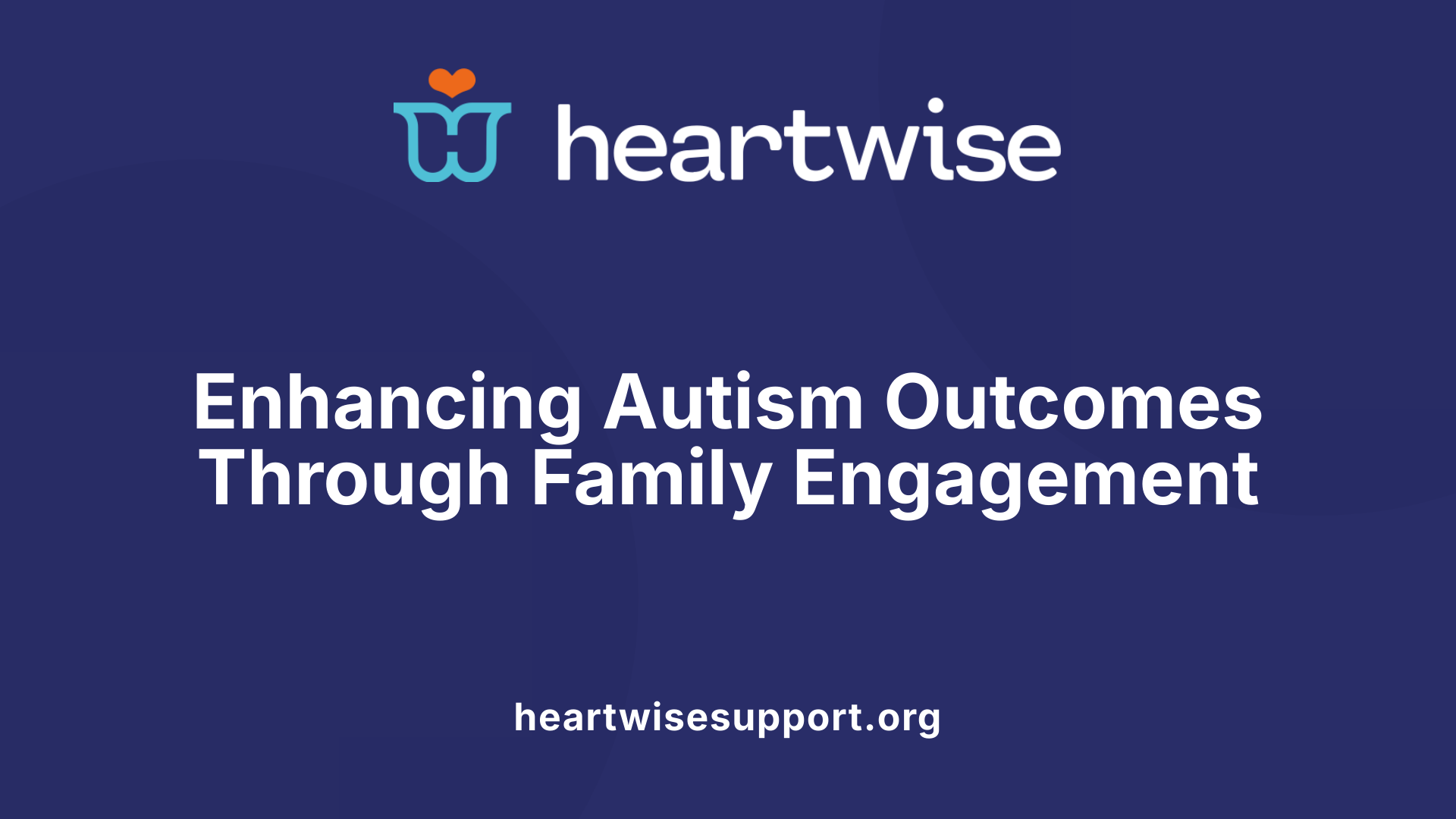Understanding the Integral Role of Families in Autism Care
Family counseling and support form the cornerstone of effective autism intervention, focusing on empowering families, strengthening relationships, and fostering positive developmental outcomes. This article explores how family-centered principles, therapeutic techniques, and active family involvement significantly influence the well-being of individuals with autism and their families, ultimately leading to improved communication, social skills, and emotional regulation.
Principles and Benefits of Family-Centered Autism Support

What are the principles and benefits of family-centered autism support?
Family-centered autism support is built on several core principles that prioritize the active involvement and respect of families in every stage of care. This approach encourages collaboration between families and professionals, ensuring that families are valued as essential partners in planning, implementation, and evaluation of support strategies.
Fundamental to this model is empowering families as decision-makers, providing them with personalized support tailored to their unique circumstances. Open, two-way communication is crucial, allowing families to voice concerns, preferences, and insights, which helps in creating effective intervention plans.
They also focus on individualized support, recognizing that each family’s needs, cultures, and goals are distinct. Working with multidisciplinary teams ensures a comprehensive approach, integrating various expertise to meet complex needs.
The benefits of family-centered support extend across multiple areas. For the individual with autism, it often results in improved communication skills, better social interactions, and enhanced adaptive behaviors. Emotional well-being is also fostered as families feel more supported and engaged, leading to reduced stress levels.
Family satisfaction with services tends to be higher when families are actively involved, as they feel respected and understood. This involvement is especially vital during key lifelong transitions, such as starting school, entering the workforce, or accessing adult services. Supporting families through these stages promotes continuity and stability, helping individuals with autism thrive over their lifespan.
Innovative support models, such as teletherapy or home-based interventions, further increase access and flexibility. These methods enable real-time collaboration and empower families regardless of geographic or cultural barriers, ensuring that support remains adaptable, relevant, and effective.
The Impact of Family Involvement on Autism Treatment and Family Dynamics

How does family involvement impact autism treatment and family dynamics?
Family participation is crucial in improving the outcomes of autism therapy and strengthening family relationships. When families actively engage in the treatment process, they ensure consistency in applying learned strategies across different settings. This reinforcement helps children build essential skills such as communication, socialization, and adaptive behaviors.
Involvement goes beyond just monitoring therapy; it involves parents, siblings, and extended family members providing emotional support, creating opportunities for social interaction, and assisting with practical daily routines. Such engagement fosters a sense of inclusion and understanding, which can boost a child’s confidence and progress.
Research indicates that early and ongoing family involvement—praised through parental training and collaboration with professionals—leads to better long-term results. Children typically show improvements in language skills, social interactions, and behavioral management when their families are consistently involved.
Despite its benefits, family involvement can introduce stress and challenges. Families often experience increased emotional strain, relationship tensions, and logistical difficulties. However, targeted interventions like family therapy help address these issues by enhancing communication, reducing stress, and strengthening bonds.
In conclusion, active family participation in autism diagnosis and intervention not only promotes developmental gains in children but also supports the mental health and resilience of family members. Facilitating family involvement through education, counseling, and support networks fosters a positive environment for everyone involved.
Techniques and Strategies in Family Counseling for Autism
What techniques and strategies are used in family counseling for autism?
Family counseling for autism employs a variety of evidence-based approaches designed to enhance family dynamics, improve communication, and bolster coping skills. Among the most common modalities are Applied Behavior Analysis (ABA), Cognitive Behavioral Therapy (CBT), and Family Systems Therapy.
ABA focuses on applying specific reinforcement techniques to promote desirable behaviors, especially in children. It encourages positive reinforcement as a primary behavior management strategy, which involves rewarding helpful behaviors to increase their frequency. This approach often incorporates visual supports like schedules or cue cards to facilitate understanding and routine adherence.
Cognitive Behavioral Therapy (CBT) helps family members address emotional responses and develop healthier thought patterns surrounding autism-related challenges. Family Systems Therapy expands the focus to family interactions, emphasizing communication patterns and emotional support networks.
In addition to these models, practical strategies such as social skills training, establishing structured routines, and sibling involvement are vital. Social skills can be promoted through role-playing, while visual supports like picture boards or timers help create predictability and reduce anxiety.
Effective communication enhancement relies on techniques like active listening, role-playing, and the use of visual aids to clarify messages. Stress management is also integral, with practices like mindfulness and self-care routines helping family members cope with stress and emotional fatigue.
All these interventions benefit from collaboration among mental health professionals, educators, and families. Tailoring plans to each family's unique needs and involving them actively in therapy sessions lead to better outcomes. This comprehensive approach supports emotional well-being, promotes understanding, and builds resilience, ultimately fostering a supportive and adaptive family environment for individuals with autism.
How Family Counseling Supports Communication and Emotional Regulation

In what ways does family counseling improve communication, social skills, and emotional regulation in autistic individuals?
Family counseling plays a vital role in helping autistic individuals develop better communication and emotional skills by teaching families how to interact more effectively. Techniques such as active listening, using visual supports, and role-playing are commonly employed to foster mutual understanding and strengthen family bonds.
Evidence-based therapies like Applied Behavior Analysis (ABA), Cognitive Behavioral Therapy (CBT), and social skills training are integrated into family counseling. These approaches are tailored to meet each individual's unique needs, focusing on enhancing language, social engagement, and emotional handling.
Creating structured routines and using positive reinforcement are essential components that help reduce anxiety and manage challenging behaviors. Encouraging caregivers to implement consistent strategies at home ensures that learning is reinforced outside of therapy sessions.
Involving family members actively in interventions not only boosts the individual’s skills but also increases the family’s confidence and ability to support their loved one's development. This collaborative effort fosters a nurturing environment where emotional understanding and resilience can flourish.
Overall, family-centered counseling cultivates a compassionate, structured, and responsive family dynamic, significantly improving communication, social skills, and emotional regulation for individuals with autism.
The Role of Therapy Techniques in Developing Essential Skills
What techniques and strategies are used in family counseling for autism?
Family counseling for autism employs a variety of approaches designed to improve communication, emotional understanding, and coping abilities within the family. These techniques aim to create a supportive environment that fosters growth and resilience.
One of the most common methods is Applied Behavior Analysis (ABA), which uses reinforcement strategies to teach new skills and reduce challenging behaviors. Social skills training is also incorporated to help individuals with autism develop better interaction and communication abilities. Structured routines supported by visual aids help create predictability and reduce anxiety.
Family therapists often use psychoeducation to increase parents’ understanding of autism, enabling better support at home. Active listening and role-playing are practical tools to enhance family members' empathy and communication.
In addition, stress management strategies such as mindfulness or relaxation exercises are introduced to help families handle daily challenges effectively.
Collaboration among healthcare providers, educators, and families is crucial. This teamwork allows for personalized therapy plans focused on specific goals, ensuring that interventions align with each family’s unique needs.
Techniques and strategies in family counseling for autism include:
| Technique/Strategy | Purpose | Additional Details |
|---|---|---|
| Applied Behavior Analysis (ABA) | Behavior modification and skill development | Reinforcement-based, targeted intervention |
| Social Skills Training | Improve peer interactions | Role-playing, video modeling |
| Psychoeducation | Increase autism understanding | Workshops, informational sessions |
| Visual Supports | Enhance comprehension and routine adherence | Charts, picture schedules |
| Active Listening & Role-Playing | Improve family communication | Practice conversations, empathy exercises |
| Stress Management Practices | Reduce family stress | Mindfulness, breathing exercises |
How do these techniques contribute to overall family and individual progress?
These strategies build a more cohesive family environment where each member understands their roles and feels supported. They promote adoption of positive behaviors, improve emotional regulation, and develop essential social skills.
By actively engaging families in therapy, these approaches increase adherence to intervention plans and foster a stronger, more supportive family bond. Ultimately, well-implemented techniques contribute to better developmental outcomes for individuals with autism, including enhanced communication, social interaction, and daily functioning.
Supporting Families in Building Resilience and Managing Stress

How can counselling help autistic individuals in terms of acceptance and managing burnout?
Counselling plays a vital role in helping autistic individuals embrace their identity and cope with burnout. It provides a safe environment to explore feelings, develop self-acceptance, and address emotional challenges. Therapeutic approaches like Acceptance and Commitment Therapy (ACT) focus on fostering mindfulness and acceptance, which can lessen the impact of societal pressures and masking behaviors.
Techniques such as Cognitive Behavioral Therapy (CBT) and art therapy are also effective in managing anxiety and emotional regulation issues common in autistic individuals. Through counselling, individuals learn personalized coping strategies that help prevent or reduce burnout, enhance resilience, and foster a positive sense of self. Overall, therapy supports autistic persons in navigating their experiences with greater confidence and well-being.
Stress management techniques such as mindfulness, support groups, and self-care
Families affected by autism benefit greatly from practical stress management strategies. Mindfulness exercises, like meditation and deep breathing, help family members stay present and reduce anxiety. Participating in support groups allows parents and caregivers to share experiences, gain emotional support, and learn coping methods from others facing similar challenges.
Self-care routines are essential and may include engaging in hobbies, taking breaks, or seeking professional help when needed. These activities strengthen emotional resilience and promote family well-being. Incorporating these techniques into daily life creates a supportive environment where families can better handle stress and maintain their mental health.
Addressing mental health challenges like anxiety and depression among family members
Families caring for individuals with autism often encounter mental health issues such as anxiety and depression. Open communication, educational resources, and emotional support are critical for addressing these challenges. Professional counselling can offer tailored interventions to help family members process feelings, develop coping skills, and reduce mental health symptoms.
Support networks, including family therapy and peer groups, provide additional layers of psychological safety. Recognizing the signs of mental health struggles early enables families to seek appropriate help, improving overall family functioning and resilience.
The importance of community networks and professional support in promoting resilience
Strong community connections and professional involvement are fundamental in building resilience within autism-supporting families. Local support organizations, healthcare providers, and educational institutions collaborate to deliver resources like workshops, therapy services, and advocacy programs.
These networks offer families vital emotional backing and practical assistance, enhancing their capacity to face challenges. Access to comprehensive, culturally sensitive services ensures families receive tailored support, fostering stability, and promoting positive outcomes across the lifespan.
Empowering Families for a Shared Journey
Family counseling and supports rooted in family-centered principles are crucial in enhancing the quality of life for individuals with autism and their families. By emphasizing collaboration, individualized care, and skill development, these approaches foster better communication, social integration, and emotional health. Overcoming challenges—such as family stress, diverse needs, and societal barriers—requires dedicated efforts, innovative strategies, and community engagement. When families are equipped with the right tools and support systems, they become resilient advocates and strong partners in their loved one's development. Ultimately, embracing family-centered autism care not only benefits the individual on the spectrum but also strengthens the fabric of the family unit, promoting hope, understanding, and lifelong success.
References
- The Importance of Family-Centered Care: Enhancing Autism ...
- Exploring Autism Family Therapy: Benefits and Techniques
- Guiding Light: Understanding Autism Family Counseling
- Supporting Families With Autistic Children | Psychology Today
- The Role of Family in Autism Treatment
- The Role of Family Therapy for Autism | Blossom ABA
- Counseling for Autism Spectrum Parents | Nurturing Support for ...
- The Importance of Family-Centered Care: Enhancing Autism ...
- Enhancing autism care through remote support: A family-centered ...
- Family-Centered Interventions for Children on the Autism Spectrum ...











